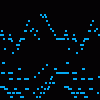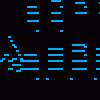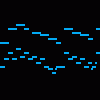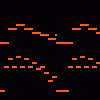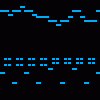Op. 1 - 100.
currently work in progress
currently work in progress
#
TITLE
No comments yet
22 variations on Twinkle Twinkle Little Star, Op. 58
Theme
I. Syncopation of theme with chromaticism
II. Variation of chords increasing the harmonic development of the theme, the second iteration of the theme has embellishments
III. Chord variation with bass embellishments
IV. An almost perfect perpetuum mobile variation that has a faster bass
V. An octave variation that reaches the lowest registers of the harpsichord, introducing a fully chromatic B section
VI. This variation is the opposite of the previous, being a perfect perpetuum mobile, this variation reaches some of the highest registers on the instrument
VII. A variation with a repeating sixteenth-note pattern in the bass that slowly moves over to a counter-rhythm of triplets, which provides a transition into the next variation
VIII. One of the highest register variations with the melody full in triplets
IX. Finally, we reach another chordal variation, this variation is some signs of an increasing use of counterpoint.
X. Canon alla Ottava: This variation is a canon on the theme in three voices, reoccurring at the octave
XI. Fugue: This is the longest variation
XII. Perpetuum mobile, with a repeating pattern making up the melody, which is switched between hands.
XIII. Triplet variation, based on chords and the VIII variation, though in the B section, the melody turns into a figure similar to that of Bach's Prelude in C Major
XIV. The tempo increases along with a slightly disfigured version of the melody moving onto chords in the B section, another perpetuum mobile
XV. Based on a series of arpeggios, perpetuum mobile
XVI. Grander version of variation VIII
XVII. Minor variation, based on variation X
XVIII. A happier variation in the major with a happy version of the theme over a version of the alberti bass
XIX. My favorite variation, a variation based on repeating arpeggios, perpetuum mobile
XX. A variation of chords over or under a perpetuum mobile melody
XXI. 3/4, which is why the measures don't line up
XXII. Based on XIX
Coda
I. Syncopation of theme with chromaticism
II. Variation of chords increasing the harmonic development of the theme, the second iteration of the theme has embellishments
III. Chord variation with bass embellishments
IV. An almost perfect perpetuum mobile variation that has a faster bass
V. An octave variation that reaches the lowest registers of the harpsichord, introducing a fully chromatic B section
VI. This variation is the opposite of the previous, being a perfect perpetuum mobile, this variation reaches some of the highest registers on the instrument
VII. A variation with a repeating sixteenth-note pattern in the bass that slowly moves over to a counter-rhythm of triplets, which provides a transition into the next variation
VIII. One of the highest register variations with the melody full in triplets
IX. Finally, we reach another chordal variation, this variation is some signs of an increasing use of counterpoint.
X. Canon alla Ottava: This variation is a canon on the theme in three voices, reoccurring at the octave
XI. Fugue: This is the longest variation
XII. Perpetuum mobile, with a repeating pattern making up the melody, which is switched between hands.
XIII. Triplet variation, based on chords and the VIII variation, though in the B section, the melody turns into a figure similar to that of Bach's Prelude in C Major
XIV. The tempo increases along with a slightly disfigured version of the melody moving onto chords in the B section, another perpetuum mobile
XV. Based on a series of arpeggios, perpetuum mobile
XVI. Grander version of variation VIII
XVII. Minor variation, based on variation X
XVIII. A happier variation in the major with a happy version of the theme over a version of the alberti bass
XIX. My favorite variation, a variation based on repeating arpeggios, perpetuum mobile
XX. A variation of chords over or under a perpetuum mobile melody
XXI. 3/4, which is why the measures don't line up
XXII. Based on XIX
Coda
Comments
No comments yet
Link to this sequence: 3851939
Simple
Advanced
Synthesizer
Instrument name
Copy
Load
Clone
Delete
Mute
Solo
Reset
Volume
Delay
Panning
Detune
Reverb
Distort
Equalizer
High
Mid
Low
Bitcrusher
Synth name
Resonance (Q)
LFO
1/4
Envelope
A
D
S
R
Edit Markers
Settings
BPM
Title
Instrument
- Select/deselect notes
- Select/deselect markers
- Save a copy
- Save offline
- Export MP3
- Export WAV
- Export MIDI
- Import MIDI/Sequence File
- Fast graphics
- Invert
- Minor ⇄ Major
- Reverse Selection
- Humanize Selection
- Legatomize Selection
- Fade In Selection
- Fade Out Selection
- Stretch Selection
0
Connect a MIDI keyboard.
Record keyboard and MIDI inputs.
Snap recorded notes to the grid.
Filter recorded notes using the key guide.
Play a metronome. When recording, gives a 4 beat lead in.
OnlineSequencer.net is an online music sequencer. Make tunes in your browser and share them with friends!









